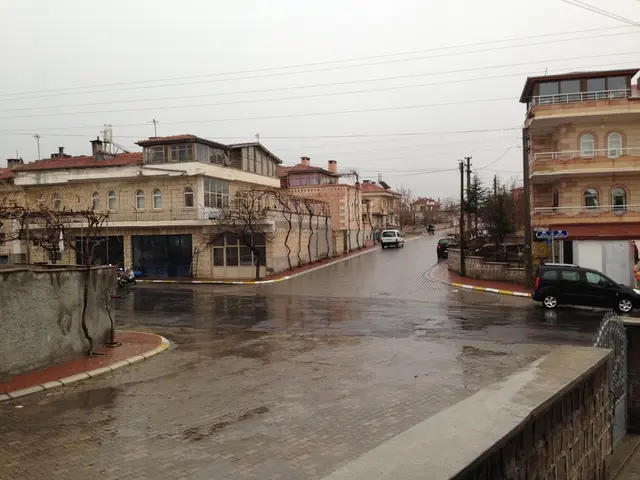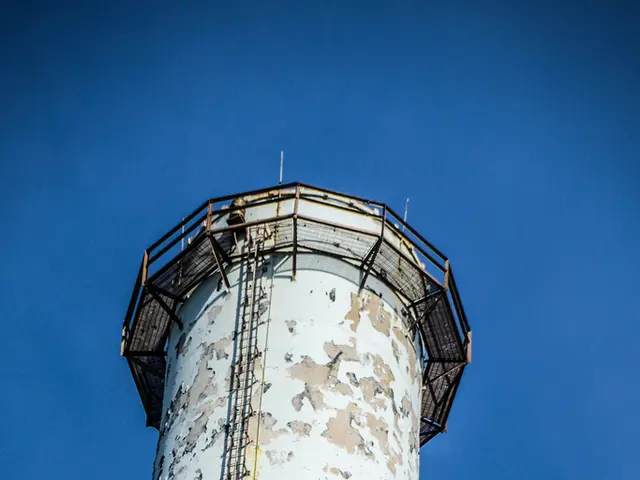Collaborative Energy Venture by Poland and Lithuania Poses Threat to Russian Energy Influence
Hitting Strides with the Harmony Link: Poland and Lithuania's Strategic Energy Initiative
Embrace the power of collaboration! Poland and Lithuania are charging ahead with the Harmony Link, a game-changing energy project set to enrich the region's energy security by 2030. This dynamic partnership was sealed between Polskie Sieci Elektroenergetyczne (PSE) and Litgrid, Lithuania's transmission system operator, who joined hands to bring this vision to life.
The Harmony Link's blueprint involves a 220 kV dual-circuit alternating current line connecting the Ełk Bis station in Poland and a new station in Gizai, Lithuania. As part of this ambitious undertaking, PSE will construct two new stations, Norki and Wigry, and upgrade the existing 220 kV line from Ostrołęka to Ełk Bis. By the end of 2024, PSE and Litgrid aim to make a final investment decision, clearing the way for procurement processes and necessary permits. Construction tenders are slated for 2026, with the new connection due to be operational by the end of 2030[1].
Initial plans for the Harmony Link called for an undersea cable stretching over 300 kilometers, bypassing the Russian exclave of Kaliningrad. This submarine cable would have connected Żarnowiec, Poland to Darbenai, Lithuania. This route would have bolstered the Baltic states' energy security by synchronizing Lithuania, Latvia, and Estonia's power systems with the Continental European synchronous area. However, in April 2023, PSE and Litgrid scrapped the tenders for the submarine version of the Harmony Link due to escalating cable and converter station costs[1]. In search of more cost-effective and timely alternatives, operators eventually settled on the overland route, with a feasibility study conducted by the Gdańsk branch of the Institute of Power Engineering in June 2024 confirming the technical viability of this option[1].
The winning ticket for the Harmony Link lies in the synchronization of the transmission systems of Lithuania, Latvia, and Estonia with the Continental European synchronous area, reducing their reliance on Russian frequency regulation. Currently, Poland and Lithuania are interconnected via the LitPol Link, an overland power connection that has been up and running since late 2015. This project marks a strategic pivot in both nations' regional energy security approaches, emphasizing the ongoing efforts to integrate the Baltic states into the broader European energy network[1].
The Harmony Link is a significant stride in the ongoing mission to enhance energy security and foster unity in Europe. As Poland and Lithuania march forward with this visionary project, they stand as beacons of resilience and adaptability in the ever-shifting landscape of economic and geopolitical challenges[2][3].
read more
- Caution, big energy news ahead! If you're ready to plunge into the intricate world of interconnectors, transmission systems, and European energy strategies, don't miss our weekly news recaps from Poland! Sign up now and stay ahead of the curve. Receive your dose of insightful, engaging news right in your inbox every Saturday. We promise no spamming: subscribe.
in the spotlight:
- Harmony Link project receives special national importance status in Lithuania, signaling its crucial role in energy security [2][5].
- Litgrid awards a €2.2 million design contract to a consortium of local engineering firms to finalize technical solutions and infrastructure plans for the Harmony Link [5].
- The interconnector will bolster the absorption of renewable energy, ensure post-synchronization capacity, and strengthen the region’s resilience against supply disruptions and geopolitical risks, with EU support [2][4].
- The Harmony Link complements existing connections such as LitPol Link and NordBalt while aligning with a proposed Baltic-German sea cable to further diversify energy sources [4].
[1] Polish Radio
[2] Reuters
[3] VOA News
[4] Bloomberg
[5] NEFCO
- The Harmony Link project, a significant step towards enhancing energy security and unity in Europe, has received special national importance status in Lithuania.
- In a strategic move, PSE and Litgrid have decided to construct the Harmony Link overland, which will connect the Ełk Bis station in Poland and a new station in Gizai, Lithuania, and reduce their reliance on Russian frequency regulation.
- By the end of 2024, PSE and Litgrid aim to make a final investment decision for the Harmony Link, initiating procurement processes and necessary permits.
- The project involves the construction of two new substations, Norki and Wigry, and the upgrade of the existing 220 kV line from Ostrołęka to Ełk Bis in Poland.
- The Harmony Link will also boost the absorption of renewable energy, ensure post-synchronization capacity, and strengthen the region's resilience against supply disruptions and geopolitical risks, with EU support.
- The cost-effective and timely overland route for the Harmony Link was confirmed after a feasibility study conducted by the Gdańsk branch of the Institute of Power Engineering in June 2024, replacing the original plan for a submarine cable.










